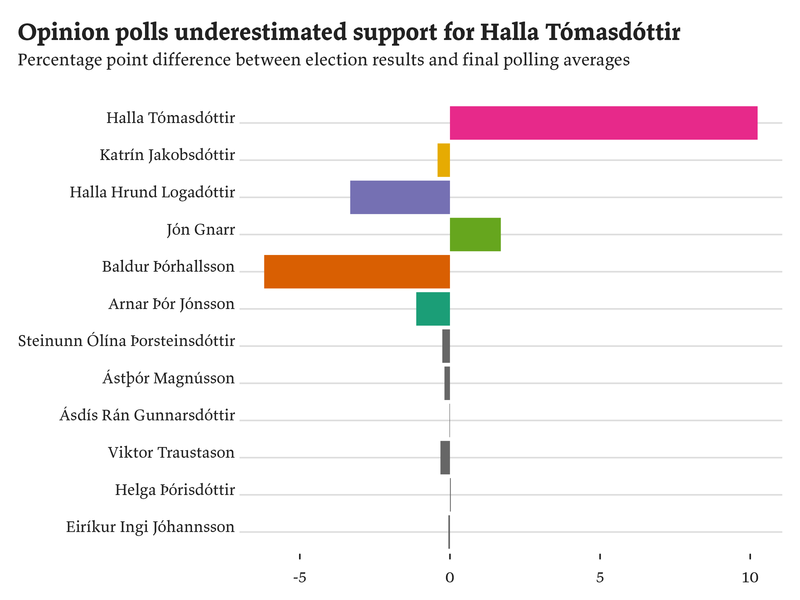Election fever in Iceland: a presidential race too close to call
Visualisations
As Icelanders head to the polls, four leading candidates compete in an unpredictable election
On 1 June Icelanders will go to the polls to elect their next president. The contest feels fresh but familiar at the same time: while the incumbent, Guðni Th, said in January he wouldn’t stand for a third term, most of the candidates are household names. Katrín Jakobsdóttir was, until a few weeks ago, prime minister; Jón Gnarr is a former mayor of Reykjavik; Ástþór Magnússon is attempting to take office at the fifth attempt.
Several polling companies are tracking the contest: Maskína, Prósent, and Gallup are releasing opinion polls roughly once a week. But while they may know how to conduct a poll, the pollsters (and journalists) are generally poor at presenting the data. Some examples: obnoxious animations, a lack of interest in communicating standard error, unreadable charts, terrible x-axes, throwing too much information in, and only showing the latest data.
That was all the excuse I needed to track the contest myself. My goals were to use all the polling data to visualise the trends over time, and to understand how close the race really is.
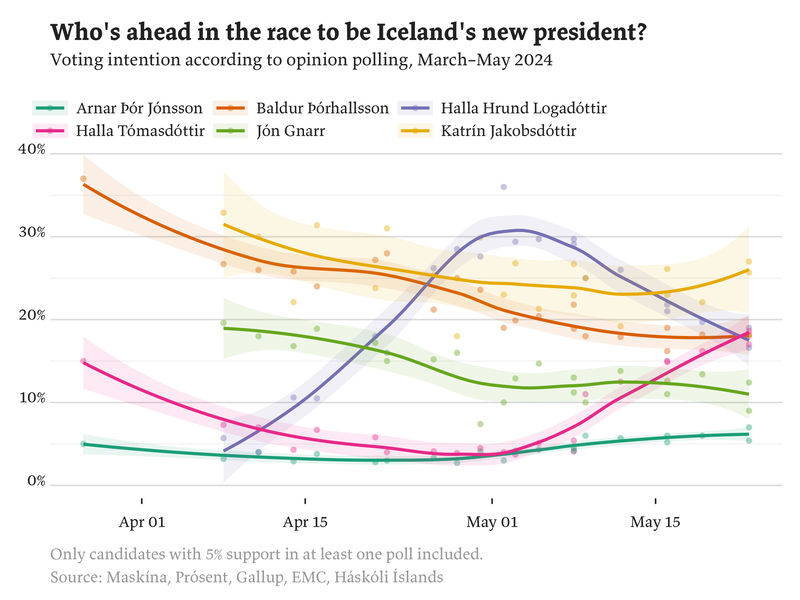
Baldur was the early favourite, commanding 35% support in late March, but his support steadily declined once other candidates entered the fray. Halla Hrund, initially polling in the single digits, surged to 30% in early May, but has faded since. Halla T, who began May with just 5% support, has seen her numbers quadruple and has jumped into second place. Katrín, meanwhile, has seen a drop in her support overall but looks to be the frontrunner in a close race.
The semi-transparent areas around the chart’s lines show how uncertain we are about the data. The central line confidently states that Katrín is at 25%, but the area around it shows us that really — given the spread and sparsity of the polling data — she could be as high as 32% or as low as 17%. That’s the difference between winning and being an also-ran. In order to see how close the race is right now, we should take a look at the latest polling averages.
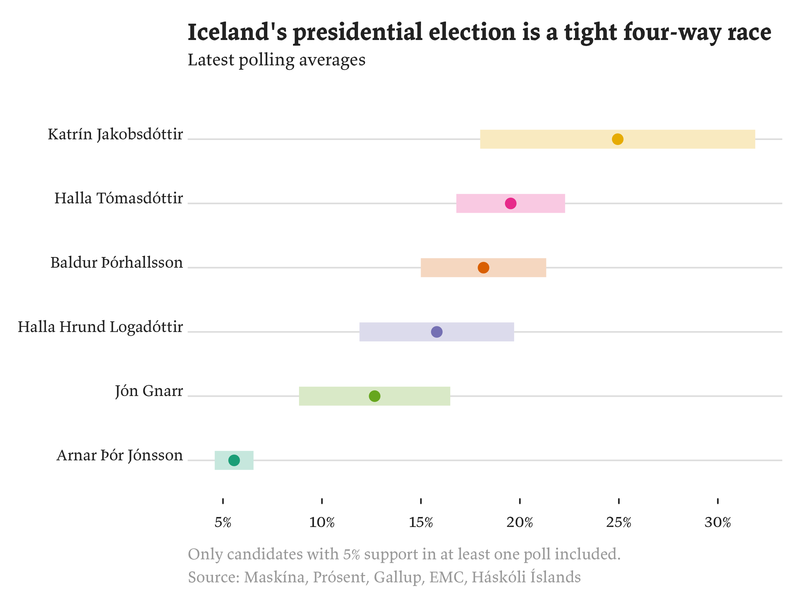
It’s fair to say Katrín has a substantial lead. But the range of uncertainty around her support should give her pause for concern. Halla T, Baldur, and Halla Hrund are virtually neck-and-neck, and all close enough to Katrín to make this a four-way race. With just a week to go then, the only prediction I would make it that the outcome is unpredictable. It may all come down to Halla T’s recent surge in support. Can she catch Katrín? We’ll find out in a few short days.
Update, 31 May 2024
The charts above are a snapshot of the race as it was on 24 May, but of course polls have continued to be published since. Here are updated charts with the latest polling data on the eve of the election. The race has got even tighter! It’s a three-way race now: Halla T has just pipped Katrín to first place, but it’s neck-and-neck. Halla Hrund is still just about keeping up with them.
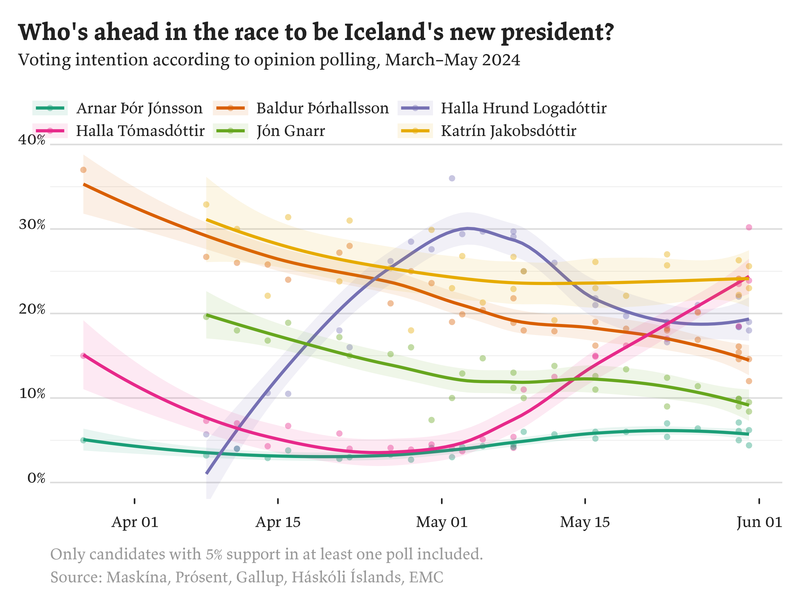
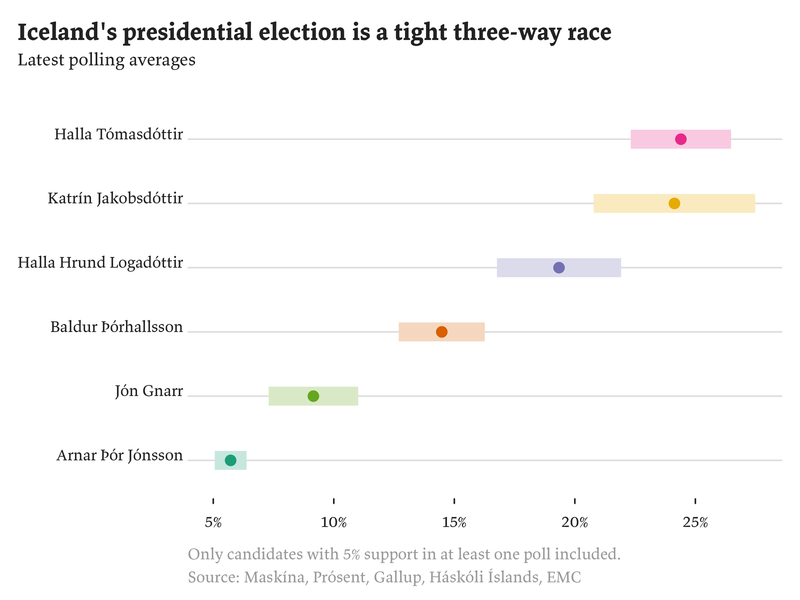
Update, 4 June 2024
Well, the results are in and it was a resounding win for Halla Tómasdóttir. She collected over 34% of the vote — nine percentage points ahead of second place — and she surpassed the expectations of opinion polls, even those published closest to the vote.
Alastair Campbell likes to call opinion polls ‘the junk food of journalism’, but I think they had a spectacular and direct effect on this election. Halla T won this election in large part because of the opinion polls. People love to back a winner, and on top of that there was a substantial group that didn’t want Katrín to be president. That meant that when the polls showed Halla T to be on an upward trend and the candidate best-placed to beat Katrín, people decided to back her instead of their preferred candidate (largely, by the looks of things, Halla Hrund and Baldur). I don’t think Halla T’s surge would have been possible without the opinion polls. So, although they got it wrong, I think the opinion polls were decisive in this election.
